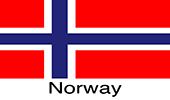Analytical Approach / Core Analytical Activities / Macro and Community Monitoring
Macro and Community Monitoring
Key Indicator Monitoring as a FSNAU core analytical activity is dividedinto two components-Macro Indicator Monitoring and Local IndicatorMonitoring. Macro Indicator Monitoring refers to the continuous data collection andanalysis of key objective measures of international, regional,national, sub-national level processes that have a pronounced effect onpeople's food and livelihood security. The term "macro" is ageneral term that is distinguished from a local (community-level orlivelihood-level) monitoring in terms of the spatial scale of datacollection and meaning. Macro indicators include both singlenumbers representing Somalia as a whole (e.g. total population, totallivestock exports), or a collection of key indicators from variousplaces throughout Somalia. Collectively, macro indicators providea fair understanding of general trends in different parts of Somalia(e.g. market prices from major towns), and how they are indicative offood security. FSNAU's Macro Indicator Monitoring incorporates the following sectors, and their key indicators:-
Agriculture
- Seasonal and off-season crop harvest estimates
- Annual Cereal Balance Sheet
- Cereal Market Price (major markets)
- Rainfall monitoring in major growing areas
Pastoralism/Livestock
- Seasonal migration
- Livestock market price (major markets)
- Livestock export figures
- Rainfall monitoring in major grazing areas
Nutrition
- Long-term nutrition trends
- Health Facility trend monitoring
- Recent nutrition survey findings
Market Analyses
- Prices of major imported commodities
- Terms of Trade analysis
- Currency exchange rates calculations
- Cross-border trade flow estimates
- *in development is remittance flow analysis*
Civil Insecurity
- Area specific information when available
- *in development is information from SLIMS*
Climate
- Rainfall estimate data
- RFE - decadal trend analysis (short and long term)
- NDVI - decadal trend analysis (short and long term) Key Questions Macro Indicator Monitoring Address:
- What are the long-term trends in food and livelihood security for Somalia, as detected by key indicators
- Annual/Seasonal Early Warning: What general areas in Somalia are likely to experience food insecurity in the near future (i.e., this season or year)?
- What data is available to conduct statistical analysis of trends in food and livelihood security in Somalia?
- What is the statistical relationship between key indicators of food and livelihood security at the macro level?
Local Indicator Monitoring is akin to a sentinel site system whereby, in general, specific sites or towns are identified and then aconsistent set of indicators is routinely collected on a monthly basis from each of the towns. The FSNAU Local Indicator Monitoring system, called SLIM System for Somali Livelihood Indicator MonitoringSystem, is multi-sectoral in nature, collecting key local-level indicators from small towns. The key indicators include the following localized information:
- Local market prices for basic commodities (water, cereals, milk, etc)
- Local market prices for livestock sales (camel, goat, sheep, cattle)
- Casual labor and transport costs
- Health facility statistics (malnutrition, number of visits, etc)
- School attendance (primary and koranic, boys and girls)
- Remittance and local credit received
- Civil insecurity measurement
- Migration estimates
Somali Livelihood Indictaor Monitoring System (SLIMS) is intended to include data affecting the most vulnerable groups, returnees and IDPs. The SLIM System, is similar to a standard sentinel site system, but is distinct in three analytical components:-
- a direct analytical relationship between the indicators collected and a baseline understanding of livelihoods-indicators are analyzed within livelihood zones
- an explicit understanding of the spatial 'representativeness' of each node based on the concept of a "catchment cluster", and
- data collection of objectively verifiable indicators based on key informants from civil society as opposed to community focus groups. SLIMS is not intended to provide a complete picture of what is happening in that area, but rather only intended to signal an area of concern (based on a minimum of objective data). If warranted, more in-depth field analysis can be conducted to better understand the situation. As well, over time the routine data collection of objective indicators builds of a historic (longitudinal) data base that allows for correlation analysis between variables and comparison of current signals with historic trends.
Key Questions Local Key Indicator Monitoring Address:-
- What are the local market indicators which suggest a potential change in food security, livelihood, and nutrition status?
- What are the health indicators which suggest a potential change in food security, livelihood, and nutrition status?
- What are the socio-economic indicators which suggest a change in food security, livelihood, and nutrition status?
- What are the civil insecurity indicators which suggest a potential change in food security, livelihood, and nutrition status? FSNAU employs a number of different methods for collecting Key Indicator Monitoring information. These include traditional methods of primary and secondary data collection (i.e. surveys, direct market and town-level data collection, collation and triangulation of secondary information, etc.), as well as internet-based downloading of remotely sensed data for climatic rainfall and vegetation analysis.
Products from FSNAU's Macro and Community Monitoring:-


















